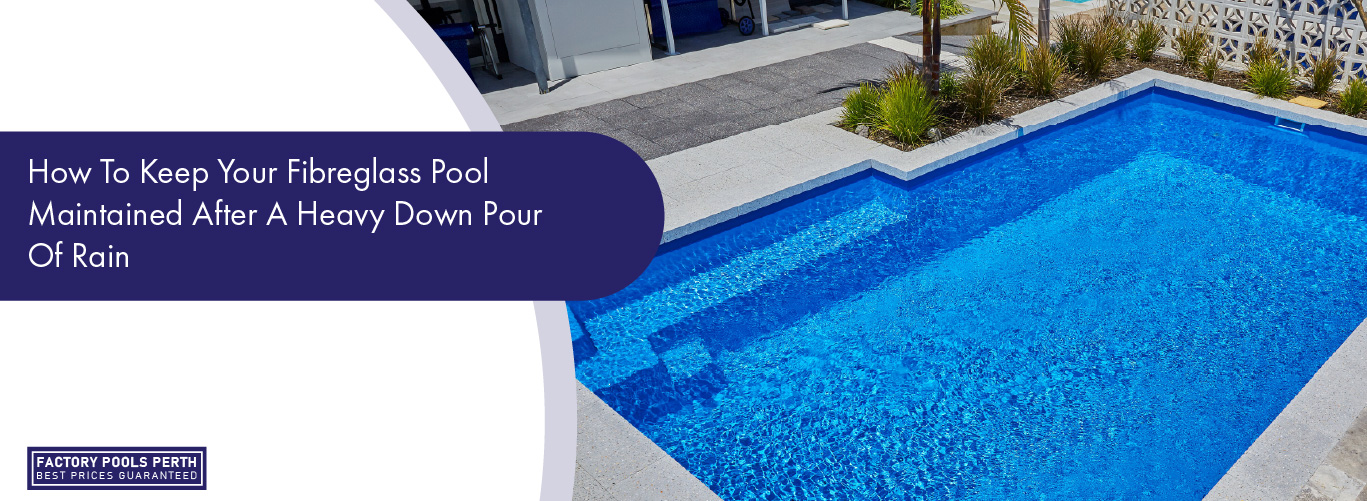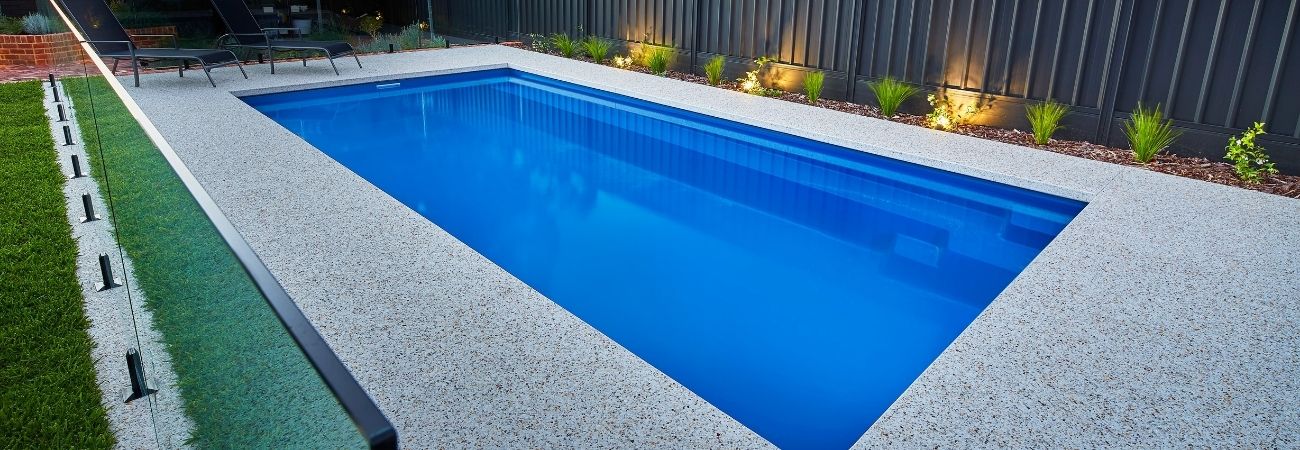How To Keep Your Fibreglass Pool Maintained After A Heavy Down Pour Of Rain
Heavy rainfall can have a wide variety of effects on your fibreglass pool, and none of these are good. That’s why every time there’s a heavy downpour, there are certain steps that you need to take to ensure proper maintenance of your pool. In this post, we’ll take you through all the ways in which the rains affect swimming pools, along with what you need to do for maintaining yours. So, without any further delays, let’s get right into it.

The effects of rainfall on swimming pools
High water level in the pool
This is the most obvious effect that rainfall has on swimming pools. While you may not make much of it, the fact is that a higher than normal water level can interfere with the functioning of the skimmer. Simply put, if the skimmer stops functioning, it will stop skimming the pool’s surface and circulating water. As you might well know, rainfall collects a variety of contaminants and pollutants on its way down from the heavens. When the skimmer stops working due to a high water level, these contaminants may eventually settle at the bottom of the swimming pool. Over time, this accumulation of pollutants has the potential of making the water unsafe for swimming.
Changes in pH
Pool water should ideally have a pH of around 7 – 7.4. A higher pH indicates acidic water, while a lower pH indicates alkaline water, neither of which is a good thing for your swimming pool. Rainfall, by itself, has a pH of 7 – completely neutral. However, as it falls, it rapidly absorbs a variety of contaminants, most of which have low pH. While the occasional rain won’t matter too much in the long run in terms of seriously affecting your pool’s pH, heavy rains sustained over successive days can do significant damage. Rainwater may also absorb sulfuric acid and carbonic acid from gases in the atmosphere. This acid rain will have the exact opposite effect of alkaline rain and has the potential of raising the pool water’s pH.
Reduced Total Alkalinity level
Pool water needs to have some degree of alkalinity. Without alkalinity and combined with low pH, your pool water may become corrosive. When the fixtures inside the pool are exposed to this corrosive water for extended periods, they are quite likely to be damaged. While some fixtures such as rails, ladders, and lights can be replaced easily, others such as filters, heaters, and pumps will make for expensive replacements. If metal parts underwater are heavily corroded, they’re likely to lead to the pool water appearing discoloured or stained.

Decreased calcium hardness
Rainwater has close to zero calcium hardness, and too much of it can bring down the calcium hardness of your pool water. As a result, you will have to add calcium hardness. However, decreased calcium hardness can be a good thing as well, i.e. if your pool has hard water (more than 400 ppm CH).
Increased chlorine use
Chlorine is the most popular disinfecting agent, and it works inside swimming pools by eliminating bacteria and algae. Simply put, the greater the amount of bacteria and other microorganisms, the higher the chlorine consumption. As rainwater picks up pollutants on its way down through the atmosphere, the existing chlorine in your pool may be rapidly used up.
Development of algae
When organic contaminants contained in rainwater like phosphates and nitrates accumulate within the pool, there’s a risk of algae development. While fibreglass pools are generally known for being resistant to algae formation, it’s not a guarantee. And if algae forms inside the water, there will be pool safety issues down the road.

How to minimize the harmful effects of rainwater
So, it’s clear that frequent heavy rains can change several things within your pool’s water. However, there are ways that allow you to manage the effects of rainfall on your fibreglass pool. In the long run, these ways will save you a lot of time and money on pool repairs and maintenance. Let’s find out what they are in this section.
Check pool chemistry regularly during the rainy season
Pool chemistry includes the water’s total dissolved solids (TDS), pH, chlorine, calcium hardness, and total alkalinity. Taking regular readings of this pool chemistry during the rains can point out what’s lacking and what’s excessive. This will make it easier for you to make adjustments before the rainfall-induced effects do any serious damage to the pool.
Use algaecide to prevent algae formation
As we mentioned before, it’s rare for fibreglass pools to experience algae formation. However, it is possible if the conditions are severe. To keep algae development at bay, we recommend using algaecide on a weekly basis. If algae does develop, the pool will eventually appear greenish. Even at this stage, you can make things right by using algaecide-containing copper, which is highly effective at eliminating algae.

Raise chlorine levels whenever rain is forecast
Keeping an eye out for the weather forecast will help you to know when you can expect the next spell of rain. As rainfall contains contaminants that are likely to increase chlorine demand, it’s best to raise the chlorine levels before the rains arrive. This will ensure that the chlorine levels are sufficient to neutralize the harmful contaminants before they can do significant damage.
Dealing with overflows
Overflows are probable if rains continue for successive days without any respite. However, there are ways to deal with them, depending on the pool filter. For instance, if it’s a sand filter, you can switch the multi-port valve to the waste setting. Follow up on this step by turning on the pool pump and bringing the water down to the right level. For a cartridge filter, the steps would involve fitting the hose of the pool to the 3-way-valve. Next, place the hose in the stormwater drain and then proceed to turn the valve’s handle for diverting the excess water through the pool hose. After this, adjust the water level by turning on the pool pump.
So, now that you know what problems to expect from heavy rainfall and their solutions, we hope you can maintain your pool better before, during and after the rains.

